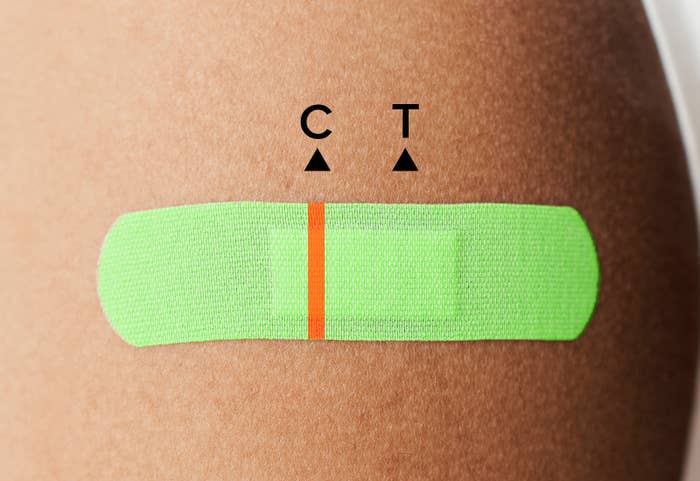
Sorry to break it to you, but COVID is still here — and likely to stick around indefinitely. What exactly that will mean in the future is uncertain, but evidence so far suggests that the coronavirus has joined the endemic germ club, and that means one thing: annual boosters.
In fact, a new, slightly modified COVID booster designed to protect against the latest Omicron subvariants — BA.4 and BA.5 — is now ready for your arm. Because we know you can get COVID over and over, the booster may help spare you from a second, third, or even fourth infection.
The CDC’s vaccine committee officially recommended the new booster Thursday, Sept. 1, and an endorsement from the agency’s director followed shortly after.
You can get the updated Omicron booster if you are at least two months out from receiving your primary series or first or second booster dose. Only people 12 and older can get the new Pfizer booster while only those 18 and older can get the new Moderna booster.
The CDC said additional recommendations for the updated Omicron booster, including those for children under 12 years old, will likely follow in the coming weeks.
“The updated COVID-19 boosters are formulated to better protect against the most recently circulating COVID-19 variant. They can help restore protection that has waned since previous vaccination and were designed to provide broader protection against newer variants,” CDC Director Rochelle Walensky said in a statement. “This recommendation followed a comprehensive scientific evaluation and robust scientific discussion. If you are eligible, there is no bad time to get your COVID-19 booster and I strongly encourage you to receive it.”
Is this booster even worth getting?
The currently available vaccines target the first coronavirus strain that emerged in 2019 and 2020. However, real-world evidence suggests that they just can’t keep up with all the mutations that have occurred since, particularly those that gave rise to BA.4 and BA.5.
These subvariants began to dominate in early July, with BA.5 now making up about 89% of COVID cases in the US (BA.4 makes up about 7.5%), just months after the original Omicron strain took over at the end of 2021. Most concerning, however, is that BA.4 and BA.5 are better than previous versions of the virus when it comes to evading the body’s defenses gained from natural infections and vaccinations.
Anticipating the subvariants’ dominance in the US, the FDA in June asked Pfizer and Moderna to develop modified “bivalent” versions of their vaccines to be used this fall, and the companies delivered. Both Pfizer and Moderna have submitted their applications to the FDA for emergency use authorization in people ages 12 and older (Pfizer) and those ages 18 and older (Moderna). (The original vaccines will still be used to “provide a base of protection,” the FDA said, with the new bivalent shot acting as a booster.)
Although the arrival of bivalent boosters is welcome news, some experts we spoke to said they think they’re coming a bit too late. Ideally, Americans would enter the fall season already armed with this revamped protection. Nevertheless, it’s important for those who are eligible to get the modified shot as soon as possible. After all, BA.5 is still behind most infections occurring today.
“COVID is not going to disappear. It's going to stay with us for a long time. And that's what we have seen with similar viruses in the past,” Ali Mokdad, chief strategy officer for population health at the University of Washington, told BuzzFeed News. “This virus is going to keep mutating and could possibly produce an escape variant that could be more severe than what we’re seeing right now.
“We need that [new booster] immediately,” Mokdad said.
I haven’t received a booster yet. Should I wait for the new Omicron shot (if it's not available)?
No. If you have only received your first two COVID shots, it’s not worth waiting for the new bivalent booster. The risks of infection and long COVID are just too high, Mokdad said. (Remember it takes about two weeks to gain maximum protection from the vaccine.)
“My answer has always been that the best vaccine for you is what's available for you right now,” he said. “I wouldn't risk two months, three months, or even two weeks without protection against hospitalization and death knowing there is a vaccine that can protect me from it.”
Still, the answer to this question depends on who’s asking, said Dr. Allison Bartlett, pediatrician and associate medical director of infection control at University of Chicago Medicine.
People who are relatively healthy and under the age of 50 could probably afford to wait for the new Omicron booster because their risk of severe illness is relatively low. (However, keep in mind that anyone can develop long COVID, no matter how young, healthy, or mild your infection is.)
But those who are older and/or immunocompromised may be better off getting boosted as soon as possible with whatever is available, “especially since as a society we are not working very hard on the other mitigation measures, including masking,” Bartlett told BuzzFeed News.
“There is definitely an advantage to the bivalent component, but again for individuals who remain vulnerable and are at high risk, the right thing to do is to get that booster now,” she said.
I’m already up to date with my boosters. Can I get the Omicron one, too?
Yes. As long as it has been two months since you received your last booster dose, whether it was your first or second one, then you can get the updated shot.
I’m vaccinated, boosted, and had COVID. Do I really need the new booster?
You’re right to think your immune system is equipped with enough defenses to tackle COVID if exposed again, but if we’ve learned anything in the last two years, it’s that protection from both infection and vaccination wanes over time, and more quickly than you might think.
So the short answer is yes.
Bartlett said people who have had their recommended one or two boosters likely fall into the category of those who can safely wait to get the bivalent booster, especially if they’ve gotten COVID or been vaccinated within the last four months.
The CDC said you may consider delaying getting the updated booster shot by three months if you recently had COVID. You can get it earlier than that if you wish, but just make sure you’ve completely recovered from your infection.
A Qatar study that has yet to be peer reviewed found that people who had a pre-Omicron COVID infection had about a 28% protection against BA.4 or BA.5. A prior Omicron infection, however, offered stronger protection; it was found to be about 80% effective against BA.4 and BA.5.
Overall, studies show protection from infection can begin to wane at around four months, but the immune system is pretty complex, so this can vary from person to person.
A 10-state analysis released by the CDC in February found that a COVID booster was 91% effective against hospitalization two months after vaccination as Omicron spread. After four months, however, the booster’s effectiveness dropped to 78%.
Can the new Omicron booster prevent a new variant from emerging?
Unfortunately, no. As long as the virus continues to spread, it has the opportunity to mutate into a different and potentially more dangerous version of itself.
“[The new booster] will not help future variants from emerging, but it will help us defend against them,” Mokdad said. On the more positive side, he doesn’t think a future variant will have the same massive impact Omicron did because many people in the US now have some immunity from vaccines and infections. We also have powerful treatments, like Paxlovid, that may prevent people from developing severe COVID.
Even so, it’s impossible to predict what the next variant may look like. “Will it be another version of Omicron or will it be a completely different Greek letter variant? It’s hard to predict,” Bartlett said.
“What the long-term cadence is of both the timing of evolution of the virus and timing of our ability to get boosters remains to be determined,” Bartlett said. “As with all things COVID, many more questions remain than we have answers for.” ●
UPDATE
This article has been updated to reflect the CDC’s authorization of the new booster on Thursday, Sept. 1.
